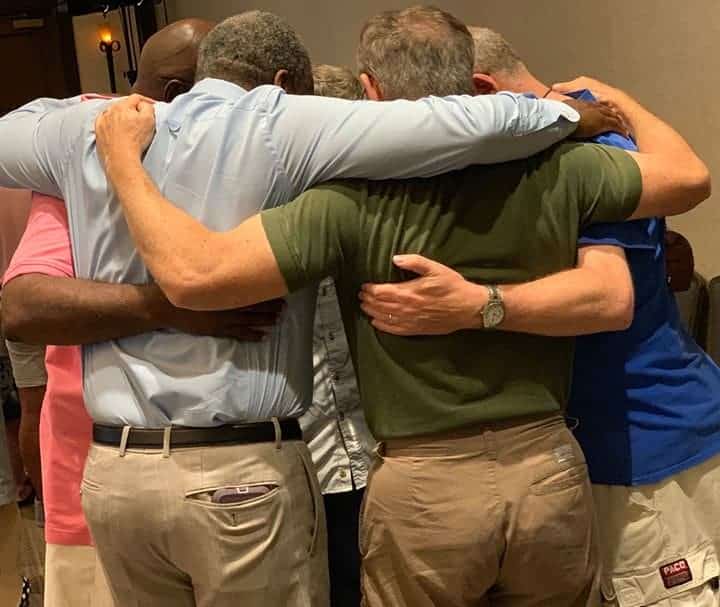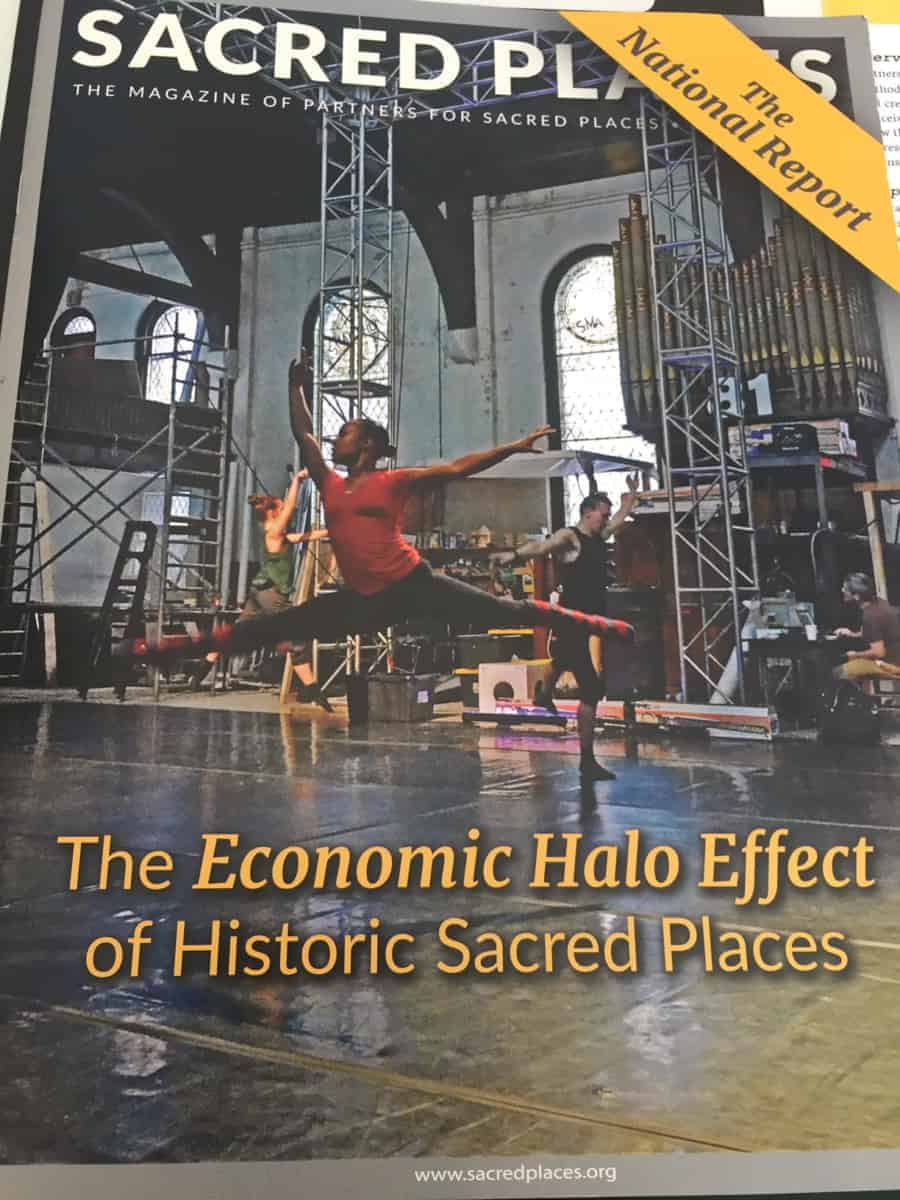On the second day of The Duke Endowment’s Convocation on the Rural Church, all of the air was sucked out of the room. This was on purpose, as over 250 attendees sat with one hand on their heart, the other on their stomach, and were instructed to take a deep breath by Rev. Dr. Melanie L. Dobson, a professor at Lutheran Southern Seminary. The crowd was in the midst of a plenary session entitled “The Grace & Gift of the Body,” and Dobson was practicing what she is preaching. Methodically, the crowd breathed in and out in rhythm as Dobson said repeatedly, “Jesus Christ, son of God, have mercy on me.”
She and Dr. Warren A. Kinghorn, a psychiatrist and a co-director of the Theology, Medicine, and Culture Initiative with Duke Divinity School and Duke University Medical Center, led most sessions during this year’s convocation with a focusing theme of “That All May be Healed.” During the three-day gathering, Aug. 5-7, pastors from United Methodist Churches in rural North Carolina were presented with scientific research and philosophy on the importance of health. These programs were paired with scripture intertwined with meditative practices so that pastors were putting lessons into action every day.
Robb Webb, director of the Rural Church Program for The Duke Endowment, welcomed the crowd and reflected on the current state of divisiveness. This messaging was carried over from the last convocation in April, which had the theme of “Embracing the Power of Welcome,” and focused on the idea of hospitality.
Robb Webb @DukeEndowment acknowledges this “disorienting moment of normalized division.” Words matter, he says. The rural-urban divide language dismisses the nuance and mutual benefit of our rural-urban areas where connections grow and flourish. pic.twitter.com/wGeK2PEgoX
— Mebane Rash (@Mebane_Rash) April 8, 2019
These two convocations seemed to fall in line with a metaphorical journey. The United Methodist Church is in the midst of important decisions, and that was touched upon in April. Pastors did not shy away from discussing the unknown future of the church and wrestled openly with how they and their congregations could embrace the power of welcome. At this week’s gathering, what anchored discussion was the power of healing and what that means for both the pastors personally and their congregations. Kinghorn said, “health isn’t just biological, but also social and emotional,” and stressed that relationships matter.
“What happens in our bodies matters,” says @WarrenKinghorn. The church is a place where community is present…the church has the ability to think about communities that think about healthy relationships. @DukeEndowment pic.twitter.com/u3PpeStyGl
— EdNC_Rural (@EdNC_Rural) August 7, 2019
“We live in a culture where the concept of health serves some people in our culture more than others, and where health is more available to some than to others,” said Kinghorn. “The church has the space, the people, and the opportunity to change that.”
One way this was showcased at convocation was through a breakout session with Partners for Sacred Places, a nonsectarian, nonprofit organization that’s doing a nationwide study on the economic impact of older religious properties.
“The size and complexity of the economic impact of sacred places provides powerful new evidence that America’s sacred places have enormous community value, a value that is increasingly at risk when these building decline or close.” — The Economic Halo Effect of Historic Sacred Places
The organization completed a study with over 90 congregations in three major U.S. cities and concluded that these spaces generate over $1.7 million per congregation annually in economic impact. They are about to embark on a study focusing solely on North Carolina with at least 85 congregations from The Duke Endowment’s list of around 1,300 rural United Methodist Churches.
Using surveys and interviews with congregational leadership, the study breaks down value into these categories: direct spending, education, impact on individual lives (such as reducing addiction or gaining employment), catalytic impacts (encouraging visitation and local spending), invisible safety net, and open space.
According to the report, when “older buildings provide a range of subsidies to support community-serving programs and activities,” the community wins. A church with multiple services breeds a healthy surrounding neighborhood.
The study also gives data-driven affirmation that churches and faith-based organizations serve as anchor institutions in communities. Partners for Sacred Places hopes the formula they created to determine economic impact can be used as a tool for congregations. Leaning on the data, churches can make decisions on how best their assets can serve their neighborhoods and how to invest in their future.
Another nonprofit organization supporting this effort is Wesley Community Development. Aimed at helping churches think about developing or repurposing their property to best serve the surrounding community, the organization has created apartments, mixed-use commercial space, and more.
Wesley Community Development was an integral part of helping Central United Methodist Church create the Children of the World Learning Center, a private preschool in Charlotte with a sliding scale fee for all children in the community.
The convocation contained other breakout sessions entitled: Active Listening: Communicating for Positive Collaboration, Greater Clarity, & Diminished Conflict, Waging Peace, Right Where We Live, Healing Conversations, and more. There was time left in sessions for silent reflection, journaling, and prayer. This gathering emphasized, more than any other, the importance and power churches have in uplifting each other and communities.

Editor’s note: The Duke Endowment supports the work of EducationNC.
Recommended reading













